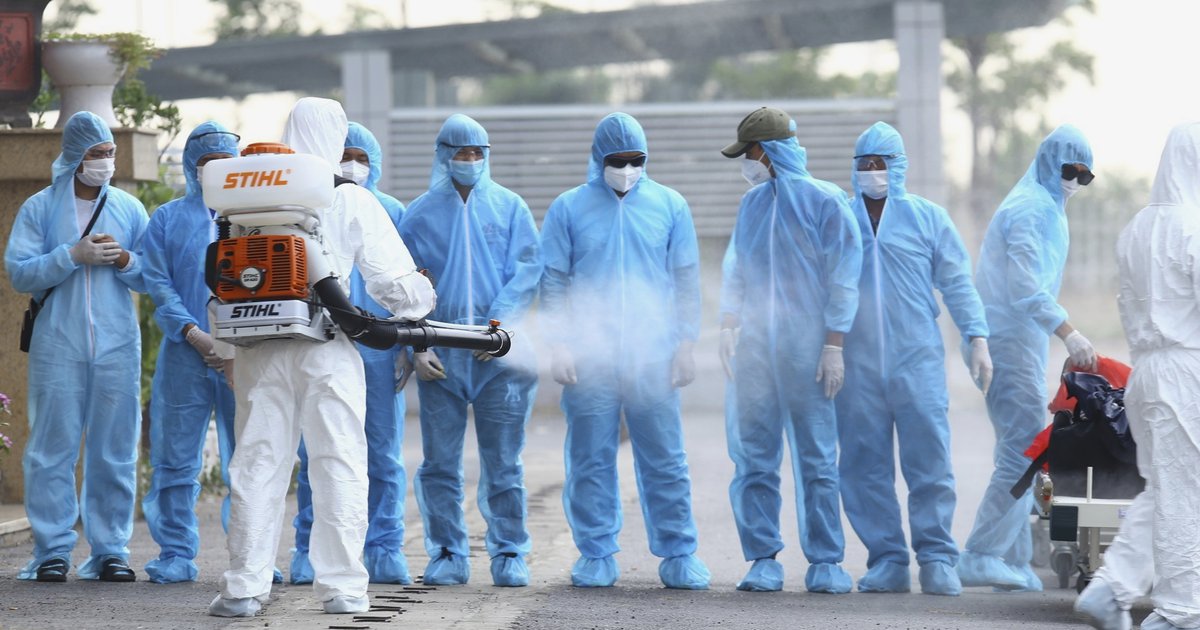Editor’s note: The Salt Lake Tribune is providing free access to critical stories about the coronavirus. Sign up for our Top Stories newsletter, sent to your inbox every weekday morning. To support journalism like this, please donate or become a subscriber.
How is the coronavirus transmitted from person to person?
Seven months since we discovered the virus, we have learned much more about how it spreads. But there’s still significant controversy on some aspects of the research, as public health experts debate how best to inform the world.
I want to show you it all: the stuff we know pretty well and the stuff scientists fight over. To start, let’s break down the three major modes of transmission.
Scientists call it: Fomite transmission
Everyone agrees the virus can live on surfaces and objects. When we’ve tested hospitals where they treat COVID-19 patients, we find the virus on the floors, as well as the shoes of the doctors and nurses that walk on them. We find it on the computer mice used by staff. We find it on the sickbed handrails and in the bathrooms patients use. It’s on the window ledges and doorknobs, patient cellphones and remote controls. You get it: the stuff gets everywhere.
And we have evidence the virus can last for a relatively long time. On tissue paper, it’s only a few hours. Wood? Two days. Glass? Four days.
But what we don’t have is many examples of someone getting sick from touching a surface and certainly not on a huge scale. One of the most famous cases of coronavirus transmission came from Germany, where a man was infected by sitting back-to-back with someone who had it. Their only contact was when one asked the other to pass the salt shaker. Even that case can theoretically be explained by other modes of transmission: what if small respiratory droplets from the infected man found their way to the susceptible man through even that short interaction?
There’s also been a case that a North Carolina epidemiologist traced back to a pharmacy keypad.
And… that’s about it. There are probably more obvious individual cases of surface transmission, but the truth is that it just doesn’t happen very frequently. As one report stated: “There are few to no clear cases of COVID-19 [surface] transmission found in the literature.” In particular, the virus seems to be not particularly infectious in small surface doses. Unless someone sneezes on a counter, you touch it with your hand and then touch your mouth or nose, you’re probably fine.
The Centers for Disease Control and Prevention and the World Health Organization, looking at both public and private data, came to the same conclusion. “It may be possible that a person can get COVID-19 by touching a surface or object that has the virus on it and then touching their own mouth, nose, or possibly their eyes. This is not thought to be the main way the virus spreads,” the CDC writes.
This one isn’t controversial: nearly everyone who has looked at the subject agrees that surface transmission is rare.
Scientists call it: Droplet transmission
Spittle transmission is what the CDC and WHO consider to be the major way the coronavirus is spread. It involves droplets being expelled from one person and then landing in or near the mouth, nose or eyes of another.
Of course, the amount of droplets released and the distance they travel is pretty dependent on how they’re released. Normal breathing? They’ll go less than 3 feet. Normal talking? Slightly more. Coughing? Over 7 feet. Sneezing can be really dangerous: droplets are expelled at more than 100 miles per hour, and can end up traveling 20 feet or more.
Of course, there’s significant variance here: heavy breathing and loud talking probably shoots the droplets farther. These droplets move ballistically — that is, they’re primarily dependent on their initial speed and the force of gravity pushing them downward.
But the agreement by the CDC and WHO that this is the major form of transmission has not led to identical social distancing guidelines. The CDC’s 6-foot rule is famous locally, but the WHO still only recommends one meter, just over three feet. Australia splits the difference and says 1.5 meters.
Like everything, it’s not black and white, but a gradient. You’re going to be exposed to more spittle at 3 feet than 6 feet, and more at 6 feet than 20 feet.
As a side note, one study shows that kids are less adept at exhaling droplets than adults. Not only are the number of droplets released low, but kids are releasing them lower to the ground than adults. Less height means that those droplets go less far and are less likely to end up landing on the face of an adult. That might explain why younger children don’t seem to be as infectious as older children and adults.
Scientists call it: aerosol or airborne transmission
Think about when you see your breath condense on a cold day. What happens? The cloud doesn’t fall to the ground immediately, but lingers in the air.
Even after those droplets become invisible, they remain afloat for some time. They hang out until wind pushes them away, or they evaporate, or they combine with water droplets already in the air to create bigger droplets and fall to the ground.
These are what infectious disease specialists call aerosols. All they are is small droplets, but because they’re so small, they d

